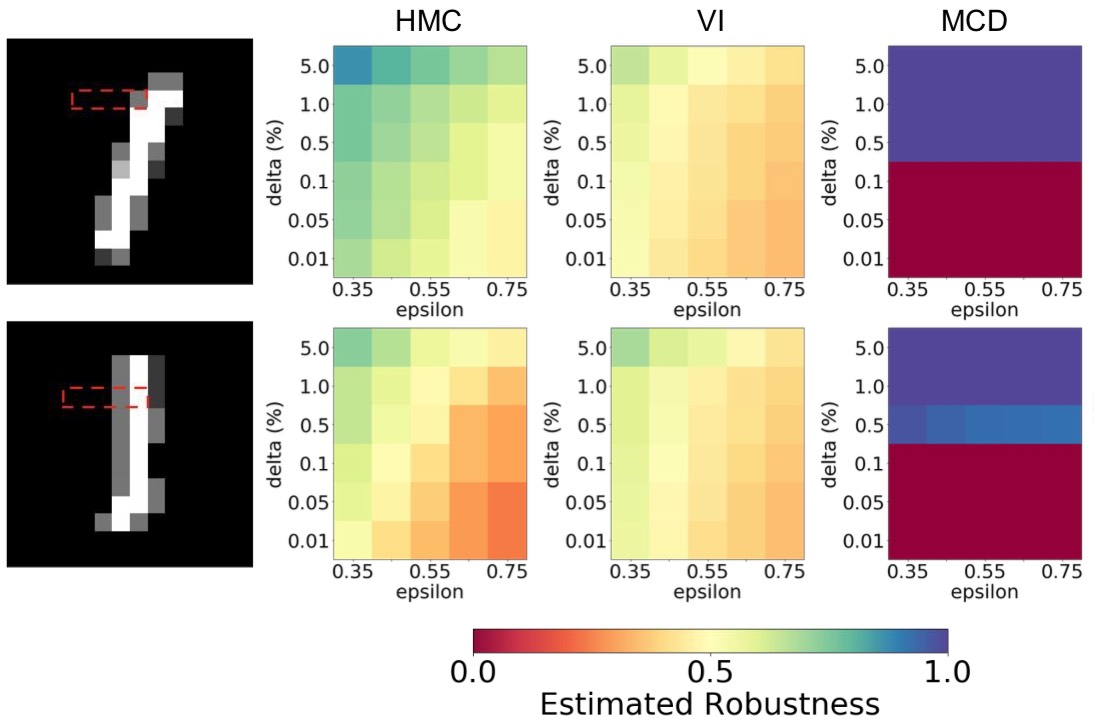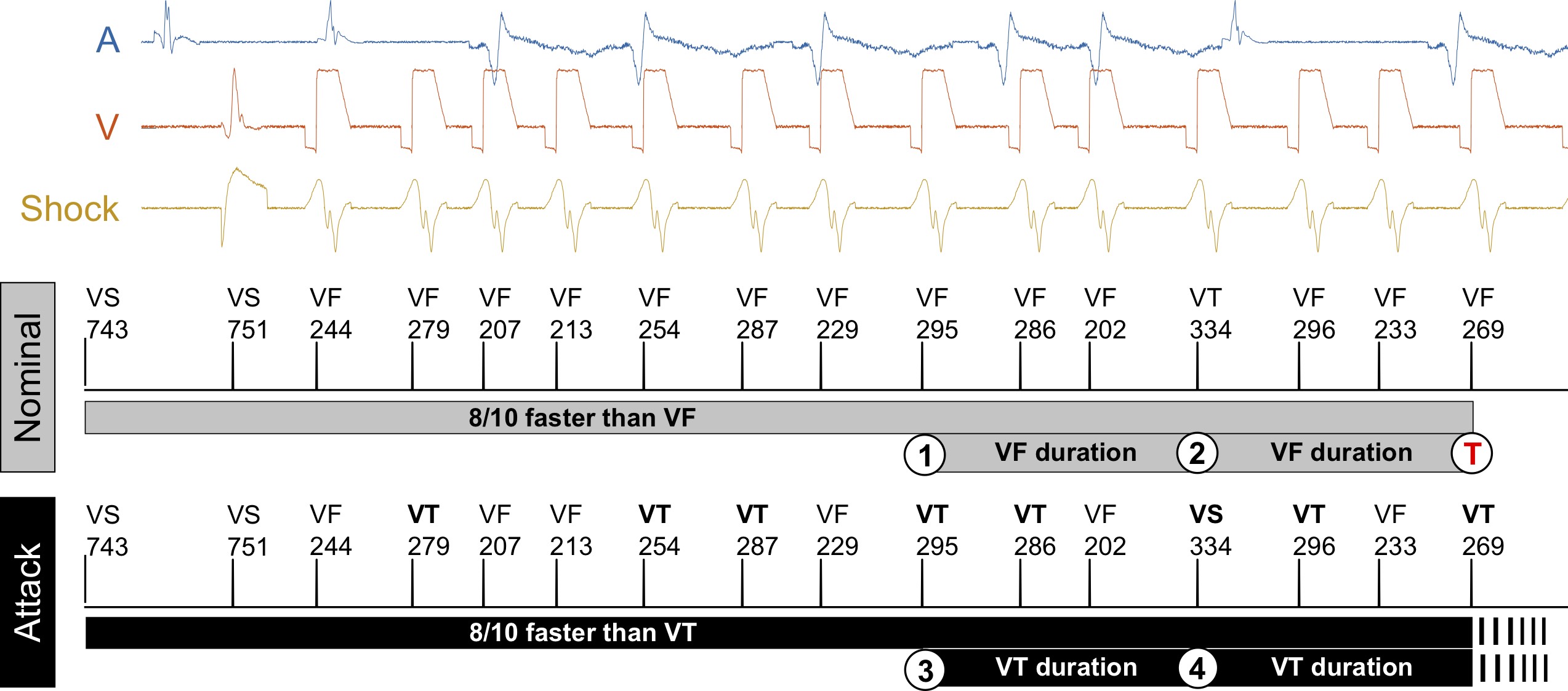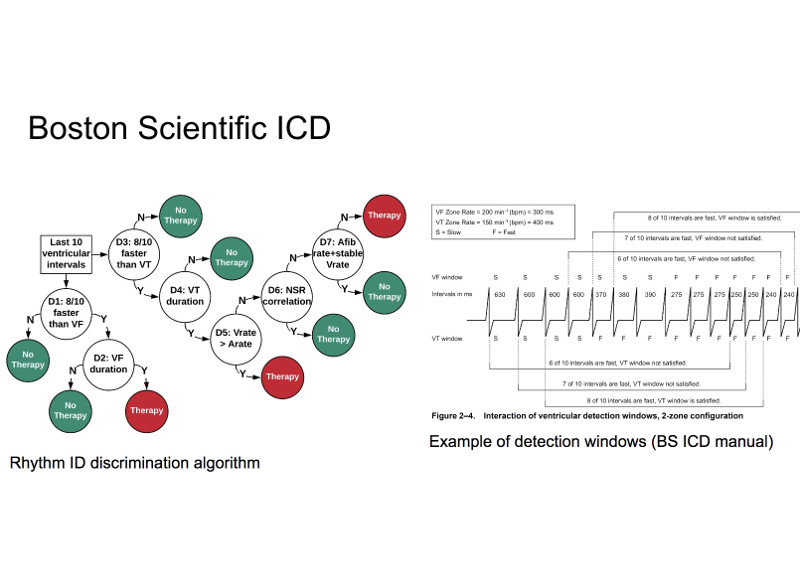Research
Probabilistic Robustness of Bayesian Neural Networks
We introduce a probabilistic robustness measure for Bayesian Neural Networks (BNNs), defined as the probability that, given a test point, there exists a point within a bounded set such that the BNN prediction differs between the two. Such a measure can be used, for instance, to quantify the probability of the existence of adversarial examples. Building on statistical verification techniques for probabilistic models, we develop a framework that allows us to estimate probabilistic robustness for a BNN with statistical guarantees, i.e., with a priori error and confidence bounds, by leveraging a sequential probability estimation scheme based on the Massart bounds.
We evaluate our method with several approximate BNN inference techniques on image classification tasks associated to the MNIST digit recognition dataset and a two-class subset of the German Traffic Sign Recognition Benchmark (GTSRB) dataset, showing that the method enables quantification of uncertainty of BNN predictions in adversarial settings. Code available in GitHub.

Synthesizing Stealthy Attacks on Cardiac Devices
An Implantable Cardioverter Defibrillator (ICD) is a medical device for the detection of fatal cardiac arrhythmias and their treatment through electrical shocks intended to restore normal heart rhythm. An ICD reprogramming attack seeks to alter the device parameters to induce unnecessary therapy or prevent required therapy.
We present a formal approach for the synthesis of ICD reprogramming attacks that are both effective, i.e., lead to fundamental changes in the required therapy, and stealthy, i.e., are hard to detect. We focus on the discrimination algorithm underlying Boston Scientific devices (one of the principal ICD manufacturers) and formulate the synthesis problem as one of multi-objective optimization. Our solution technique is based on an Optimization Modulo Theories (OMT) encoding of the problem and allows us to derive device parameters that are optimal with respect to the effectiveness-stealthiness tradeoff. Our method can be tailored to the patients current condition, and generalizes to unseen signals.

Attacking ECG biometrics
With the increasing popularity of mobile and wearable devices biometric recognition has become ubiquitous. Unlike passwords, which rely on the user knowing something, biometrics make use of either distinctive physiological properties or behavior.
In this work, we study a systematic attack against ECG biometrics, i.e., that leverage the electrocardiogram signal of the wearer, and evaluate the attack on a commercial device, the Nymi band. We instantiated the attacks using different techinques: a hardware-based waveform generator, a computer sound card, and the playback of ECG signals encoded as .wav files using an off-the-shelf audio player.
We collected training data from 40+ participants using a variety of ECG monitors, including a medical monitor, a smartphone-based mobile monitor and the Nymi Band. Then, we enrolled users into the Nymi Band and test whether data from any of the above ECG sources can be used for a signal injection attack. Using data collected directly on the Nymi Band, we achieve a success rate of 81%, which decreases to 43% with data from other devices.
To improve the success rate with data from other devices, available to the attacker through e.g. medical records of the victim, we devise a method for learning optimal mappings between devices (using training data), i.e., functions that transforms the ECG signal of one device as if it was produced by another device. Thanks to this method, we achieved a 62% success rate with data not produced by the Nymi band.

